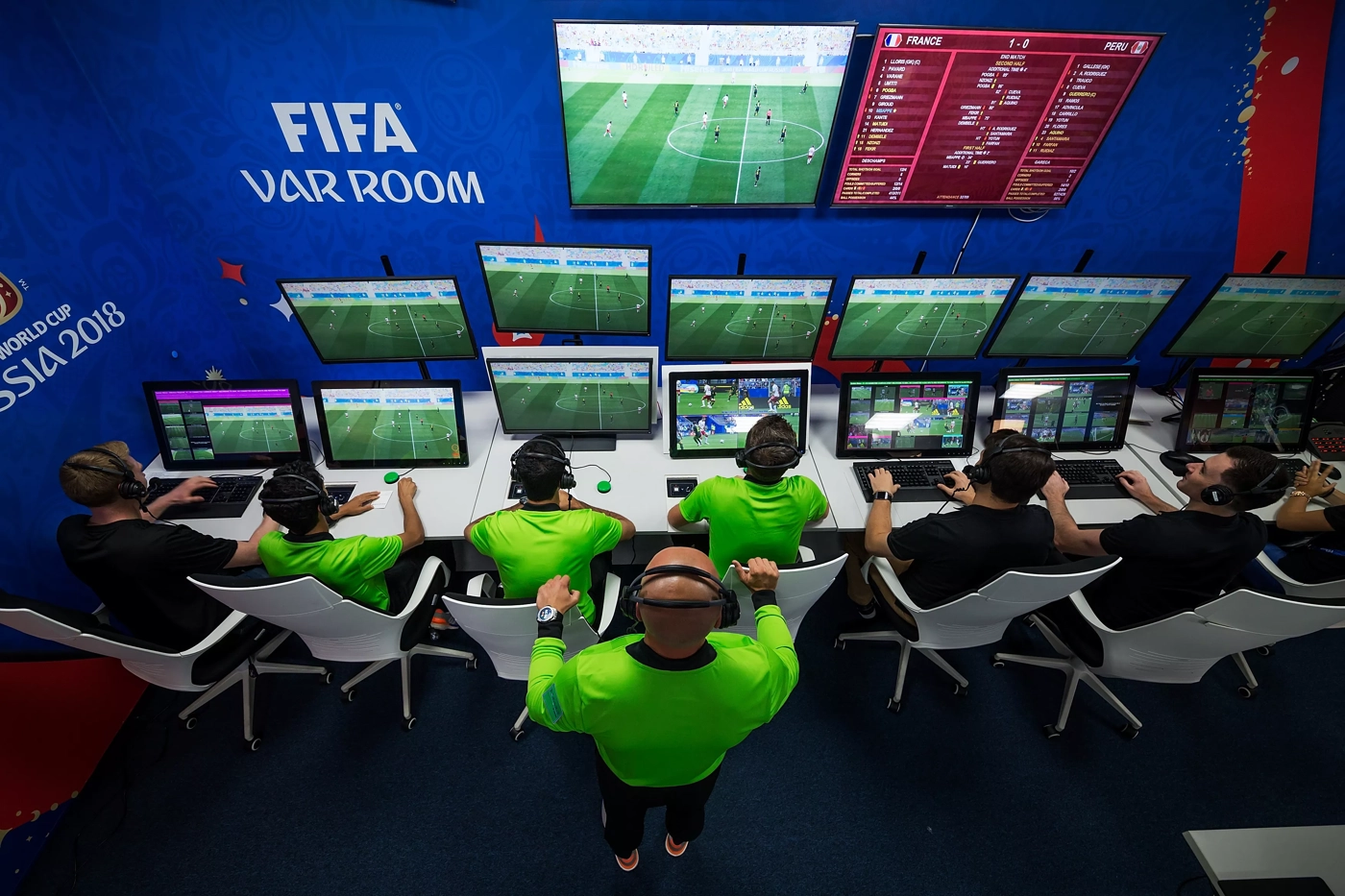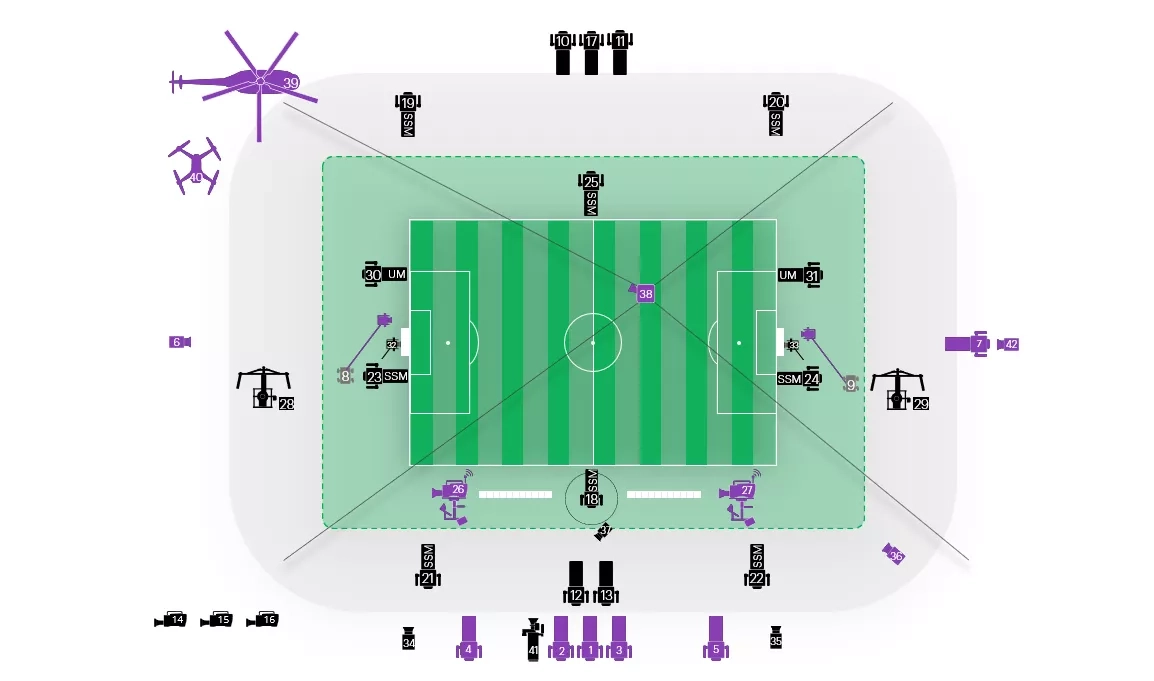
FIFA World Cup: How VAR is different from cricket’s third umpire

The use of technology has become an integral part of sport now. At the ongoing FIFA World Cup 2022 in Qatar, there are technologies and innovations used for decision-making, and video assistant referee (VAR) system is one of them.
The VAR system debuted at a World Cup in 2018 in Russia. The use of video match officials (VMOs) in football was included in the 2018/19 edition of the Laws of the Game. Since then, the VAR system has been used in more than 100 tournaments around the world.
Also read: FIFA World Cup 2022: All you need to know about the tournament in Qatar
In cricket terms, VAR is the equivalent of the third umpire or TV umpire. Fans have often called VAR as ‘football’s third umpire’.
Though both cricket and football now take the help of television cameras to make decisions during a game, there are differences between cricket’s third umpire and the VAR system.
Also read: Live telecast, streaming of FIFA World Cup in India with channel numbers
What is VAR?
A video assistant referee (VAR) is a match official, with independent access to match footage, who may assist the referee only in the event of a ‘clear and obvious error’ or ‘serious missed incident’ in relation to four match-changing decisions/incidents:
a. Goal/no goal (and offences leading up to a goal)
b. Penalty/no penalty (and offences leading up to a penalty decision)
c. Direct red card (not second yellow card/caution)
d. Mistaken identity (when the referee cautions or sends off the wrong player of the offending team)
Also read: FIFA World Cup 2022: Schedule, groups, match times in IST, venues, live TV, streaming, and more
The VAR team
The team consists of the video assistant referee (VAR) and three assistant video assistant referees. All video assistant referee team members are top FIFA video match officials.
Three replay operators select and provide the best camera angles.
Also read: Full list of all 32 squads for FIFA World Cup 2022
Original decision
The referee and other match officials must always make an initial decision (including any disciplinary action) as if there was no VAR (except for a ‘missed’ incident).
The referee and other match officials are not permitted to give ‘no decision’ as this will lead to ‘weak/indecisive’ officiating, too many ‘reviews’ and significant problems if there is a technology failure.
The referee is the only person who can make the final decision; the VAR has the same status as the other match officials and can only assist the referee.
Also read: Spain sets records with 7-0 rout of Costa Rica
Delaying the flag/whistle for an offence is only permissible in a very clear attacking situation when a player is about to score a goal or has a clear run into/towards the opponents’ penalty area.
If an assistant referee delays a flag for an offence, the assistant referee must raise the flag if the attacking team scores a goal, is awarded a penalty kick, free kick, corner kick or throw-in, or retains possession of the ball after the initial attack has ended; in all other situations, the assistant referee should decide whether or not to raise the flag, depending on the requirements of the game.
Also read: Golden Boot winners of FIFA World Cup from 1930-2018
Check
The VAR automatically ‘checks’ the TV camera footage for every potential or actual goal, penalty or direct red card decision/incident, or a case of mistaken identity, using different camera angles and replay speeds.
If the ‘check’ does not indicate a ‘clear and obvious error’ or ‘serious missed incident’, there is usually no need for the VAR to communicate with the referee – this is a ‘silent check’; however, it sometimes helps the referee/assistant referee to manage the players/match if the VAR confirms that no ‘clear and obvious error’ or ‘serious missed incident’ occurred.
42 cameras
The video assistant referee team has access to 42 broadcast cameras, eight of which are super slow motion and four of which are ultra slow motion.

Signal
If the restart of play needs to be delayed for a ‘check’, the referee will signal this by clearly holding a finger to the earpiece/headset and extending the other hand/arm; this signal must be maintained until the ‘check’ is complete as it announces that the referee is receiving information (which may be from the VAR or another match official).
Also read: Japan stuns Germany in Qatar
If the ‘check’ indicates a probable ‘clear and obvious error’ or ‘serious missed incident’, the VAR will communicate this information to the referee, who will then decide whether or not to initiate a ‘review’.
Review
The referee can initiate a ‘review’ for a potential ‘clear and obvious error’ or ‘serious missed incident’ when:
the VAR (or another match official) recommends a ‘review’
the referee suspects that something serious has been ‘missed’
If play has already stopped, the referee delays the restart
If play has not already stopped, the referee stops play when the ball is next in a neutral zone/situation (usually when neither team is in an attacking move) and shows the ‘TV signal’.
The VAR describes to the referee what can be seen on the TV replay(s) and the referee then:
shows the ‘TV signal’ (if not already shown) and goes to the referee review area to view replay footage – ‘on-field review’ (OFR) – before making a final decision. The other match officials will not review the footage unless, in exceptional circumstances, asked to do so by the referee.
or
makes a final decision based on the referee’s own perception and the information from the VAR, and, where appropriate, input from other match officials – ‘VAR-only review’.
At the end of both review processes, the referee must show the ‘TV signal’ immediately followed by the final decision.
Final decision
When the review process is completed, the referee must show the ‘TV signal’ and communicate the final decision.
The referee will then take/change/rescind any disciplinary action (where appropriate) and restart play in accordance with the Laws of the Game.
A referee can review the decision based on inputs from the VAR team, or personally review by watching footage at the referee review area which is at the ground.
Also read: FIFA 2022 World Cup: What is semi-automated offside tech, or SAOT?
Difference between VAR and cricket third umpire
In cricket, the third umpire is the umpire who may use television evidence and other available technology in order to review a decision of the on-field umpires, either by way of an Umpire Review or a Player Review.
Unlike the VAR room which is centrally located in a different place, a third umpire is at the stadium.
While VAR communicates constantly with the on-field referee and informs if there is a wrong decision, the third umpire’s role is different.
The third umpire in cricket communicates when a bowler has bowled a no-ball. Otherwise, it is the on-field umpires who contact the third umpire when a player opts for a review of the umpire decision (known as the Decision Review System or DRS), or to check for a clean catch, stumping, run out, boundary check, and others.
Unlike the VAR system which has assistants, in cricket, there is only one third umpire.
Another major difference between cricket and football is that the communication between the third umpire and his on-field colleagues is broadcast and viewers can listen to, what they are talking, but it is not the case in football.
Controversies
While it is said that no technology is 100% accurate, in both cricket and football, there have been controversies on the decision-making using technology. In the ongoing FIFA World Cup 2022 in Qatar too there have been several calls made by VAR which have been questioned.

